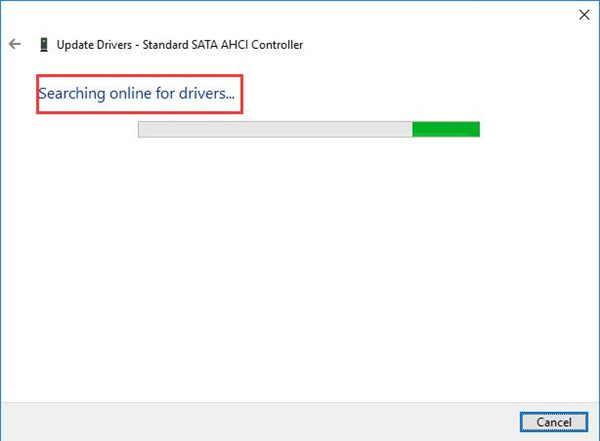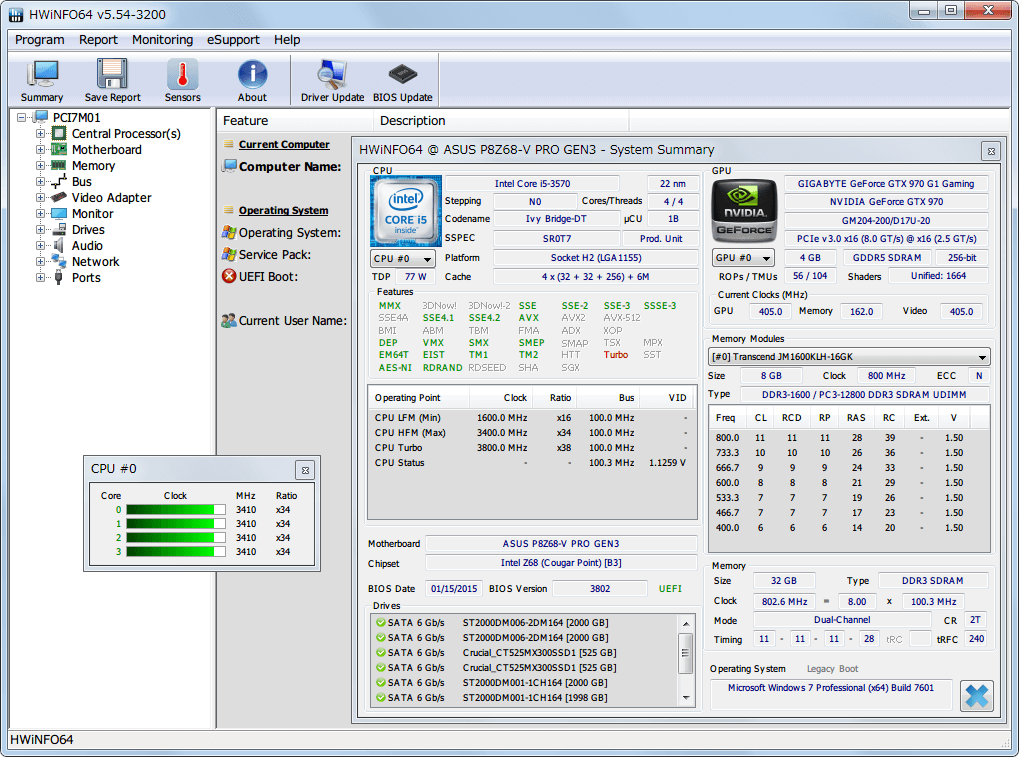If you’re one of those people who likes to build and upgrade your own computers, or if you have just decided to make your first attempt at upgrading an older system, there is one thing you may be wondering: Do I have to reinstall my OS?
Unfortunately, most people I talk to say one of two things:
- “I just always reinstall the OS.”
- “I upgraded once and I didn’t have to do anything to the OS, so that’s what I’m going to try this time.”
This package installs the software (Intel SATA Controller AHCI Driver) to enable the following device. Standard SATA AHCI Controller. Apr 03, 2015 Can not switch to AHCI mode (No drivers). The plan was to Install Win 10 in ATA mode then * Install ASUS drivers * Use MSCONFIG to set next startup to safe mode *. AHCI drivers for ASUS M5A97 Pn-W10-002 AHCI System config below. Can not switch to AHCI mode (No drivers). No data of any value and a WD 320 sata or two to play. This package installs the software (Intel SATA Controller AHCI Driver) to enable the following device. Device Name ----- Standard SATA AHCI Controller Device name in the Device Manager ----- Intel(R) 7 Series Chipset Family SATA AHCI Controller.

Well, Option #1 will certainly work all the time, no matter what. As for Option #2, whether or not the OS will boot depends on the hard disk controller driver. So, just because #2 worked for one upgrade doesn’t mean it will work for another.
Fortunately, whether you use Windows or Linux, there is a very easy way to prepare for a motherboard upgrade.
Now, I’m going to assume that if you think you can upgrade a motherboard, that means you kind of know what you are doing and you can find your away around Windows. If you don’t know how to get to Device Manager in Windows, well, stop right there and either get somebody to help you, or edumacate yourself right quick!
So, to start with, I will assume you are using Windows. For Linux users, see below.
Whether you have Windows XP, Vista, or Windows 7, the process for prepping your puter for a motherboard upgrade is exactly the same. What you need to do is to set the hard disk controller driver in Windows to the standard, plain vanilla Windows version. The reason for this is quite simple, and is illustrated in the following example:
- You have an AMD processor and VIA chipset in your current machine
- You want to upgrade to an Intel-based system
- When you swap out the hardware and try to boot, Windows will use the hard disk controller driver for your old chipset, and thus you will get a blue screen because it can’t load the OS. Oops.
The same can be true if you are moving from Intel to AMD, or even from AMD to AMD or Intel to Intel. It’s also possible that you are already using the default Windows hard disk controller, which means you don’t have to change anything. But just in case, do the following:

- Go to Device Manager
- Expand the “
IDE ATA/ATAPI controllers“ - If you have an entry like “
Standard AHCI 1.0 Serial ATA Controller” or “Standard Dual Channel PCI IDE Controller“, you’re all set. Just stop and upgrade your hardware, and you should be fine 99% of the time. If not, carry on to #4. - Right-click the non-standard disk controller entry and choose Properties -> Driver tab -> Update Driver. I’m talking controller entry here, not “
ATA Channel o“, “Primary IDE Channel“, etc. - Choose the “Browse your computer/Let me pick” options until you get a list of compatible drivers. Select the default “Standard” driver:
– For a SATA drive:Standard AHCI 1.0 Serial ATA Controller
– For an IDE drive:Standard Dual Channel PCI IDE Controller - Click OK, and don’t reboot – shut down your computer and perform your hardware upgrade. If you reboot before your upgrade, Windows may automatically replace the standard driver with the custom one that you just tried to replace!
Before firing up your upgraded puter, be sure to connect your primary boot drive up properly and configure the BIOS with that drive as the first boot hard disk. Normally, I try to connect all the drives in the computer and configure the BIOS boot order and such exactly as it all was in the old computer.
When you turn on your new monster, Windows should load and be able to access the boot hard drive just fine. It may take a bit longer than usual since Windows will be detecting your new hardware and trying to install drivers. Don’t freak out if everything doesn’t work at first – the important thing is to get the OS booted so you can install drivers and get the rest of your hardware configured and functioning properly.
That’s pretty much it. I have found this works 99% of the time. For the 1% of the time that it does NOT work for whatever reason, you can always throw the Windows disc into the optical drive, boot from it, and select a “Repair Install”. This will probably overwrite all your Windows files, and you’ll have to reapply all your Windows updates and such, but at least your data will remain intact. Just be sure not to accidentally wipe the drive. That would be bad, especially if you don’t have a backup. But, you DID make a backup first, right??
Now for Linux.
I recently had the opportunity to upgrade the hardware in a box running Ubuntu. The only thing that remained the same was the two hard drives. Everything else changed. I had read that linux just loves being upgraded, so I figured what the heck.
With my Ubuntu install, I didn’t have to set any hard disk controller drivers to a default or anything like that. I simply assembled the new machine, transplanted the hard drives to the new puter, configured the BIOS, and let ‘er rip! The machine booted without a hitch, and this was an “Ancient AMD to Modern Intel” type of upgrade. The only problem I had was that it didn’t want to detect the new ethernet controller. Rather than fighting with it by trying to install an ethernet driver without a net connection on the box, I just plopped an old ethernet card in a spare PCI slot, rebooted, et voila! The ethernet was autoconfigured and I was 100% up and running again.
Pretty easy, really.
So, whether you have Windows or Linux, you really shouldn’t have to reinstall your OS with every major hardware upgrade. If your OS installation is really old and bloated, it’s probably not a bad idea to start fresh on the new system. But if you keep your system lean and mean, why bother with a complete reinstall when you don’t have to?
Have fun!
I have an ASUS p5ke-wifi/ap which has built-in RAID controller. From the BIOS, I can choose between 3 controller types:
In that order. This setting was set to AHCI when I installed Windows7 Pro x64 and everything's fine. I have 3 hard drives, one is Windows7, and the other two I want to configure in RAID1/mirrored configuration, like this:
Now, I've already installed Windows7, but it does not boot up when I set the controller to RAID from the BIOS. While in RAID mode, I was able to create a mirrored array from HDDs 2 and 3, and in AHCI mode Windows7 seems to recognize them perfectly as 1 disk drive. Is RAID a superset of AHCI - do I even need to set the controller to RAID mode?
I've been reading that you have to install Windows7 while in RAID mode for it to force the RAID drivers to install. Yet it seems to work without this.. so I'm not sure if it's software or hardware RAID.
Is this correct setup? How do I know whether this is hardware raid or Windows7 self-configured to see them as software RAID? Can I run my RAID configuration with the BIOS set to AHCI mode or does it have to be RAID? Thank you.
4 Answers
You can RAID drives independent of the BIOS setting using utilities like Linux's MD RAID or Window's Dynamic Disks. Windows likely wasn't booting when you moved from AHCI to RAID because that is translated to Windows as a hardware change, which it does not typically play well with.
Setting RAID mode in the BIOS really only will enable a boot-time RAID setup utility which is provided by the motherboard manufacturer. If one is not supplied, then setting it to RAID more will realistically have no effect.
GarrettLatest Standard Sata Ahci Controller Driver
 Garrett
GarrettIn the case of software-raid, the system recognizes the two mirrored HD drives. So, it will manage the two drives itself.
In the case of hardware-raid, the raid controller recognizes the two mirrored HD drives and presents them to the system as one HD drive. Configuring the raid array should be done before installing/booting the system.
KhaledKhaledI've had some different ASUS boards, but it is more general: Onboard RAID is not hardware RAID, it is only hardware assisted software RAID. The main IO transfer goes over the normal SATA bus, the normal main RAM is used (by the driver), the CPU calculates the parity/runs the driver. SO you only have RAID it you've got a driver for your system. If the driver screws up, you're hosed.
BIOS modes:
- IDE: standard IDE compliant mode, to have any OS be able to talk to your disks. No RAID.
- AHCI: AHCI mode. No RAID. At least on every board I used in the last years same performance as with IDE mode. Sometimes worse drivers (blue/black screen). Supposedly supports hot plug (don't use it in servers, so can't tell)
- RAID: only RAID mode, configure in BIOS, probably monitor in Windows. This is also an AHCI mode.
You can't configure RAID while keeping data on those disks.
Most likely you have only a software raid. You can verfiy it with 2 methods. First off in the device driver there should be a junction AHCI RAID compatible driver. Second you can download a special driver for your HW raid. For example my driver installs a small webserver and I can configure options like NCQ, write and read cache, SMART monitoring, e-mail notification, notification and service threshold. If you can start a Linux you can try lspci -vvv in ultimate verbose mode to find out the raid controller.